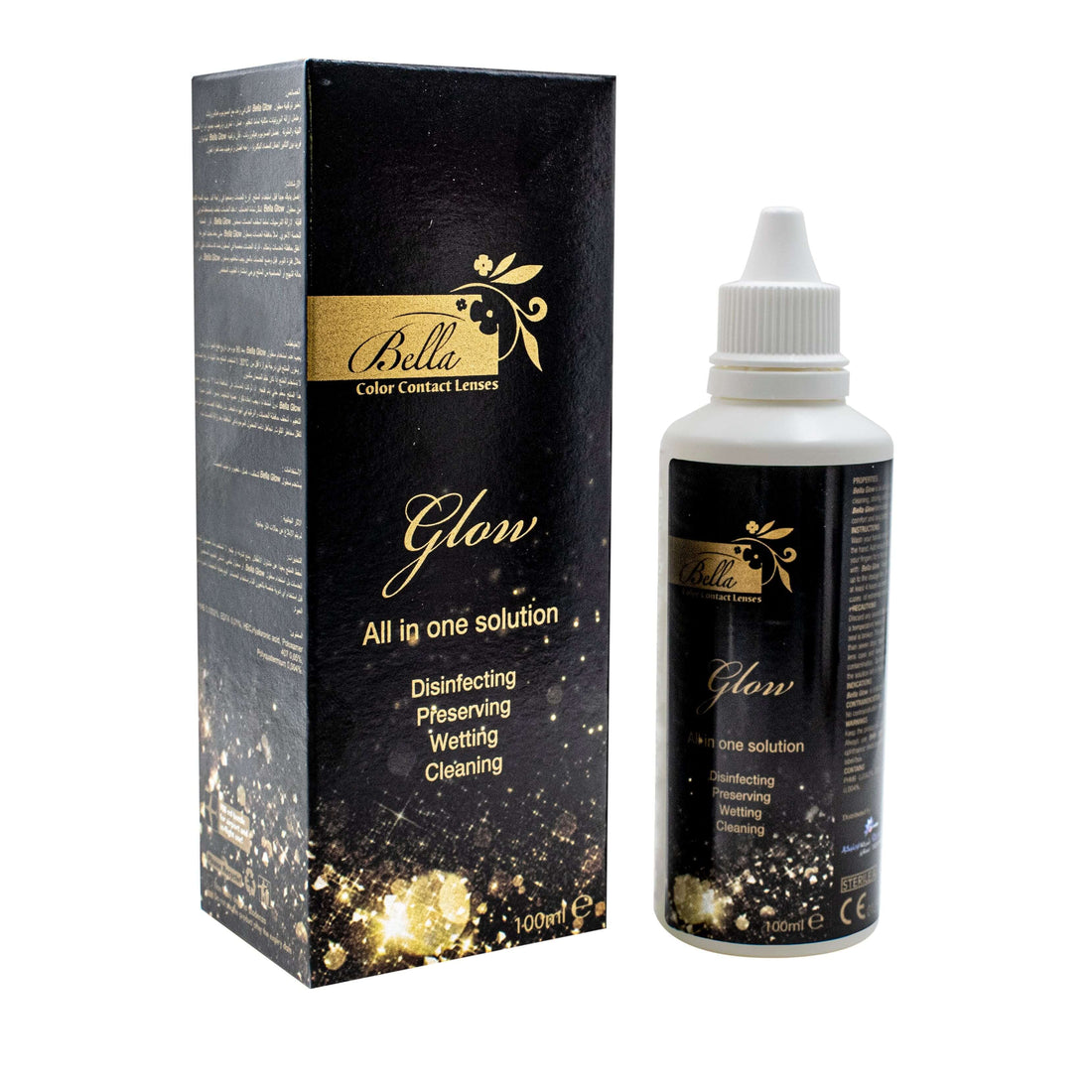Key Takeaways
-
Look for the tinted edge of your contact lens in a mirror under good lighting
-
A contact lens cannot get lost behind your eye due to the conjunctiva barrier
-
Signs of a stuck lens include eye irritation, redness, discomfort, and blurry vision
-
Different removal techniques are needed for soft vs. rigid contact lenses
-
Seek professional help if you cannot remove a stuck lens after several attempts
The Mystery of the Missing Contact Lens
If you've ever experienced that moment of panic when you can't tell if your contact lens is still in your eye, you're not alone. Whether you're a new wearer or have years of experience with contacts, this situation happens to the best of us. Maybe you rubbed your eye and now can't see clearly, or perhaps you woke up after accidentally falling asleep with your contacts in. Whatever the reason, determining whether your lens is still there and how to safely remove it is crucial for your eye health.
The good news is that contrary to popular belief, a contact lens cannot get lost behind your eye. The structure of your eye prevents this from happening. In this comprehensive guide, we'll explain how to tell if a contact lens is still in your eye, provide step-by-step removal instructions, and offer tips to prevent this situation from occurring in the future.
Signs That a Contact Lens is Still in Your Eye
Have you ever wondered if your contact lens is still in your eye? It can be confusing and sometimes even a bit scary when you can't tell for sure. Here's how to know what's happening.
Visual Signs
- Visible tinted edge - Most contacts have a slight blue or green tint around the edges to help you see them during handling. Look closely in a mirror for this colored rim.
- Blurry vision - If one eye suddenly has fuzzy or distorted vision, your lens might have moved out of place.
- Double vision - Seeing double in just one eye often means your contact has folded or wrinkled.
Physical Sensations
- Something feels "off" - That nagging feeling that something is in your eye could be your contact lens.
- Ongoing discomfort - If blinking doesn't relieve the irritation, your lens might be stuck somewhere.
- Watery eye - Your eye might produce extra tears trying to flush out a displaced lens.
- Redness - The eye with the stuck lens typically looks redder than your other eye.
Simple Tests You Can Try
- Eye movement test - Gently close your eye and move your eyeball around. If you feel something shifting under your eyelid, it's likely your lens.
- Finger test - Close your eye and lightly run your fingertip over your eyelid. A contact lens often feels like a small bump beneath your finger.
If you've tried these checks and still can't tell, it's best to see an eye care professional who can safely locate and remove the lens if needed.
How to Find a Contact Lens in Your Eye: Step-by-Step Guide
If you suspect your contact lens is still in your eye but can't see it immediately, follow these steps to locate it:
1. Prepare Properly
-
Wash your hands thoroughly with soap and water, then dry with a lint-free towel
-
Stand in front of a mirror in a well-lit room
-
If near a sink, close the drain to prevent losing the lens if it falls out
2. Check the Front of Your Eye
-
Look straight ahead in the mirror
-
Look for the slight color difference or edge of the contact lens on your iris or white part of your eye
-
Try looking in different directions (up, down, left, right) as this may move the lens into view
3. Examine Your Lower Eyelid
-
Gently pull your lower eyelid down while looking up
-
Inspect the space between your eye and lower eyelid
-
The lens may appear as a transparent disc stuck to the inside of your eyelid or the white of your eye
4. Check Your Upper Eyelid
-
Gently pull your upper eyelid up while looking down
-
If you can't see the lens, you may need to flip your upper eyelid
-
To flip your eyelid (with clean hands):
-
Place a cotton swab horizontally above your upper eyelid
-
While looking down, gently grab your eyelashes and pull the eyelid outward and upward over the swab
-
Inspect the underside of your eyelid for the lens
5. Use Eye Drops if Needed
-
If your eyes feel dry, apply lubricating eye drops that are safe for contact lens use
-
This can help loosen a lens that has dried out and adhered to your eye
6. Ask for Assistance
-
If you still can't locate the lens, ask someone else to look at your eye
-
Sometimes another person can see what you cannot, especially when checking under the upper eyelid
How to Remove a Stuck Contact Lens
Once you've located your contact lens, the next step is to safely remove it. The method varies depending on the type of contact lens you wear.
For Soft Contact Lenses
Soft contacts are made of flexible hydrogel materials and are the most commonly worn type.
If the lens is centered on your eye:
-
Wash and dry your hands thoroughly
-
Add a few drops of contact lens rewetting solution or artificial tears to moisturize the lens if it feels dry
-
Look up and pull your lower eyelid down with your middle finger
-
With your index finger, gently touch the lower edge of the lens
-
Slide the lens down to the white part of your eye
-
Gently pinch the lens between your thumb and index finger to remove it
If the lens is stuck under your eyelid:
-
Wash and dry your hands thoroughly
-
Add lubricating eye drops to help loosen the lens
-
Close your eye and gently massage the eyelid where you feel the lens
-
Open your eye and look in the opposite direction of where the lens is stuck
-
If under the upper lid, look down; if under the lower lid, look up
-
The lens should slide into view where you can remove it normally
What to Do if the Lens Feels Dry and Stuck
Sometimes a lens can dry out and adhere firmly to your eye, making it difficult to remove:
-
Apply several drops of lubricating solution or artificial tears
-
Wait 5-10 minutes for the solution to rehydrate the lens
-
Close your eyes and gently massage your eyelids
-
Once the lens is rehydrated, try the appropriate removal method for your lens type
When to Seek Professional Help
While most stuck contact lenses can be safely removed at home, there are situations when you should consult an eye care professional:
-
If you've tried to remove the lens for more than 30 minutes without success
-
If your eye becomes increasingly red, painful, or sensitive to light
-
If you suspect a piece of the lens has torn off and remains in your eye
-
If you experience a sudden decrease in vision
-
If you've had to use excessive manipulation to try to remove the lens
-
If you have persistent discomfort even after you believe the lens has been removed
Eye care professionals have specialized tools and techniques to safely remove stuck contact lenses without damaging your eye.
Preventing Contact Lens Issues
To minimize the chances of losing or having a contact lens stuck in your eye, follow these preventive measures:
Proper Lens Care
-
Follow your eye doctor's recommended wearing schedule
-
Never sleep in your contacts unless they're specifically designed for extended wear
-
Replace your lenses according to the prescribed schedule
-
Clean and disinfect reusable lenses properly
Good Habits
-
Always insert and remove lenses with clean, dry hands
-
Avoid rubbing your eyes while wearing contacts
-
Use lubricating drops approved for your type of contacts when your eyes feel dry
-
Remove contacts before swimming or showering
-
Apply makeup after inserting contacts and remove contacts before removing makeup
Regular Check-ups
-
Visit your eye doctor annually for a comprehensive eye exam
-
Have your contact lens fit evaluated regularly
-
Discuss any discomfort or vision changes with your eye doctor promptly
FAQ: Common Questions About Contact Lens Issues
Can a contact lens get lost in the back of my eye?
No, it's anatomically impossible for a contact lens to go behind your eye. The conjunctiva, which lines your eyelids and covers the white part of your eye, forms a continuous barrier that prevents objects from moving to the back of the eye.
What if I can't tell which eye had the contact lens in it?
If you're unsure which eye had the contact, check both eyes carefully. Look for differences in vision clarity, comfort, or appearance between your eyes. If one eye feels more irritated or has blurrier vision, the contact is likely in that eye.
Can a contact lens cause damage if left in the eye too long?
Yes, leaving a contact lens in your eye for too long can lead to complications such as eye infections, corneal abrasions, or in severe cases, corneal ulcers. Always follow the recommended wearing schedule for your lenses.
What if I think part of a torn lens is still in my eye?
If you suspect a piece of a torn lens remains in your eye, rinse your eye with saline solution or lubricating drops. If you still feel discomfort or can't locate the piece, consult an eye care professional promptly.
Can sleeping with contacts cause them to get stuck?
Yes, sleeping with contacts can cause them to dry out and adhere more firmly to your eye, making them more difficult to remove upon waking. This is why most contacts are not approved for overnight wear.
How can I tell if my eye is irritated from a contact lens or something else?
Contact lens irritation typically improves when the lens is removed. If irritation persists after lens removal or is accompanied by severe pain, light sensitivity, or discharge, you may have another eye condition requiring medical attention.
What should I do if I accidentally put two contact lenses in one eye?
If you've accidentally inserted a second lens into an eye that already has a lens, remove both lenses, clean them properly (if they're reusable), and reinsert one lens correctly.
Conclusion: Maintaining Healthy Eyes with Contact Lenses
Contact lenses provide clear vision and convenience for millions of people worldwide. While issues like stuck or displaced lenses can occur occasionally, understanding how to properly identify and address these situations is key to maintaining eye health and comfort.
Remember these essential points:
-
A contact lens cannot get lost behind your eye
-
Most stuck lenses can be safely removed at home with proper technique
-
Prevention through good habits and proper lens care is the best approach
-
When in doubt, consult your eye care professional
By following the guidelines in this article, you can enjoy the benefits of contact lenses with minimal complications. Regular eye exams and open communication with your eye doctor will ensure your eyes stay healthy and your vision remains clear.






